Top 10 Automated Functional Testing Tools | Updated 2025
Learn with AI
Functional testing comes in all shapes and sizes, and the same goes for functional testing tools.
I’ve reviewed and evaluated the most popular functional testing tools and shortlisted the best ones for your QA team to improve software quality and increase testing efficiency.
3 Options To Consider For Your Functional Testing Tools
When it comes to functional testing (or just any types of testing), QA teams usually have up to 3 options, with increasing levels of scalability:
- Open-source functional testing tools/libraries/frameworks
- Single-point commercial Automation Testing Tool
- Software Quality Management Platform
1. Open-source functional testing tools, libraries and frameworks
One option for your team is to use an open-source testing library as the foundation for your custom testing framework. This core library will provide essential testing features, and you can build additional layers to make the framework more user-friendly and flexible.
The building blocks of a testing framework include:
- Libraries (e.g., Selenium, Playwright, Appium)
- Browser drivers (e.g., geckodriver, Chromium)
- Design patterns (e.g., Page Object Model, Screenplay)
- Coding standards (e.g., KISS, DRY, camelCasing)
- Test artifact management (e.g., object repositories, utilities)
- Reports and logs (e.g., plugins, structured reports)
If you choose this route, you’ll need strong coding skills to connect these components and create a framework that simplifies testing.
Pros:
- Full customization
- Free, aside from your time and expertise
Cons:
- Time-consuming setup
- Requires ongoing maintenance
- Debugging issues in large test suites can slow down testing
Building your own framework gives you more control but requires significant effort to set up and maintain. While it’s cost-effective, the maintenance phase often takes the most time, especially when managing large test suites.
2. Single-point commercial automation testing tools
These are commercial tools i.e. you have to shop around for a suitable one and invest a certain amount to get access to the features. As their name suggests, these tools only have to meet a single testing purpose, and we can categorize them based on the purpose they serve:
- System-under-test (web, mobile, API or desktop testing)
- Utility (design/run/get reports)
- Testing types (UI and API testing)
For example, Postman’s focal point is solely on API performance, security and functionality. If APIs are at the top of your testing list, give it a go. While it is indeed nice to have a tool solely dedicated to a part of your functional testing, there will come a point when you want to have a more comprehensive testing experience. After all, the dedicated nature of these tools also limits their potential for expansion and scaling.
📚 Read More: Top 15 Postman Alternatives You Should Consider For Your Team
In other words, single-point commercial automation testing tools are amazing if your organization only needs to test within the features of that tool. However, as the team scales, and you want to branch out further to test other areas of the software, it is better to go with an entire software quality management platform.
3. Software quality management platforms

A software quality management platform incorporates all functionalities needed to automate and view the full picture of quality activities. In a way it is several single-point commercial automation testing tools unified into one, carrying all of the features that the team potentially need.
Software quality management usually includes several connected stages, from planning to reporting. Using separate tools for each stage often leads to a scattered view of quality, where teams waste time trying to piece everything together.
The real value of modern testing platforms is that they give teams an all-in-one workspace. You can test web, API, and mobile-native apps using a shared keyword library. Tools for linking requirements, writing automation scripts, and tracking test coverage are built in, so there's no need to search for or connect extra tools.
Top 10 automated functional testing tools
To give a non-biased list of tools for automated functional testing, a mix of open-source libraries and vendor solutions are listed below.
1. Katalon (Cross-platform UI and API automated functional testing tools)

Katalon is a true all-in-one automated functional testing tool. With a Katalon license, you can:
- Write UI and API functional test cases for web, desktop, and mobile apps using Katalon's pre-built automation frameworks without having to code.
- Run tests locally, remotely, in the cloud, with emulators/simulators, or on private devices — over 3,000+ environment combinations.
- Run tests in parallel from the Command Line Interface (CLI) with Katalon Runtime Engine.
- Integrate Katalon tests into top CI/CD tools to automatically trigger tests when code is merged.
- Schedule and manage test execution, plus generate detailed reports (screenshots, videos, HTML snapshots, test suite reports).
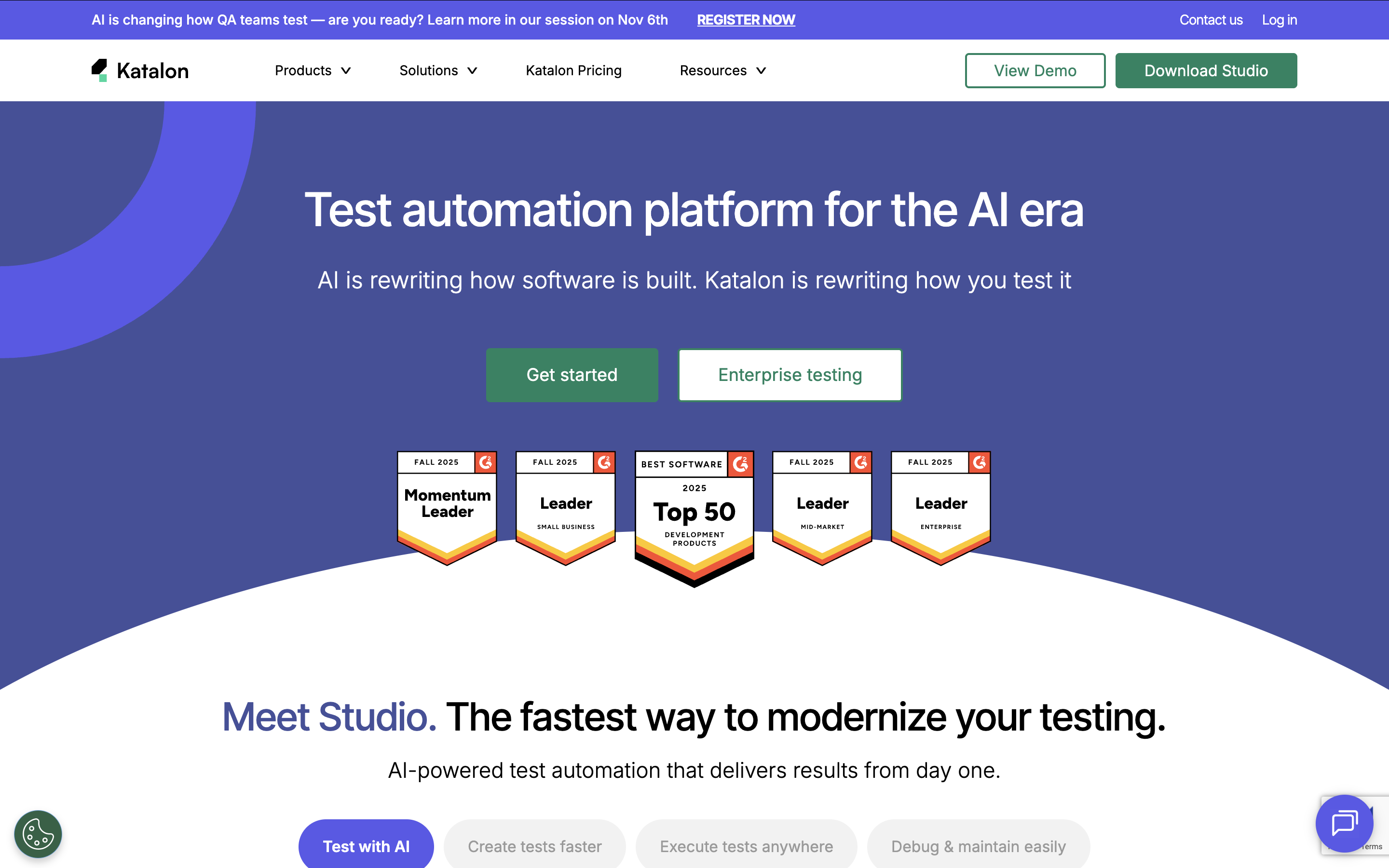
Katalon is also one of the first AI-powered automation testing tools. Notable features include:
- Automatic test maintenance
- AI-powered regression testing with TrueTest — analyzes user behavior in production and autonomously generates test cases.
Watch this video from Daniel Knott, one of the most popular software testing influencers, to see Katalon AI in action:
Are you ready for an upgrade of your functional testing?
Visit Katalon Website | Pricing | G2 Reviews
.png)
📝 If you want a more customized automated functional testing tool for your team, you can request a demo from Katalon here.
2. Selenium: Automated Functional Testing Framework For Web/Web Apps

Selenium is a suite of libraries and extensions used to build a framework to automate the testing of web applications.
Actions users take on web apps — clicking buttons, scrolling, entering usernames/passwords — are replicated by Selenium interacting with browser drivers.
Feature highlights:
- Relative locators: find elements using above, below, toLeftOf, toRightOf, near.
- CDP access: use Chrome DevTools APIs to mock network requests and debug tests live.
- Smart object detection: find elements using ID, Name, ClassName, TagName, LinkText, Partial Link Text, XPath, CSS.
- Multi-window/tab handling: open/close browser tabs with getWindowHandle(s).
3. Cypress Framework (web, unit, integration, and end-to-end testing)

Cypress is not new to front-end developers using TDD/BDD for JavaScript-based frameworks. With Mocha as its underlying framework, Cypress focuses on solving wait and timing issues present in Selenium WebDriver.
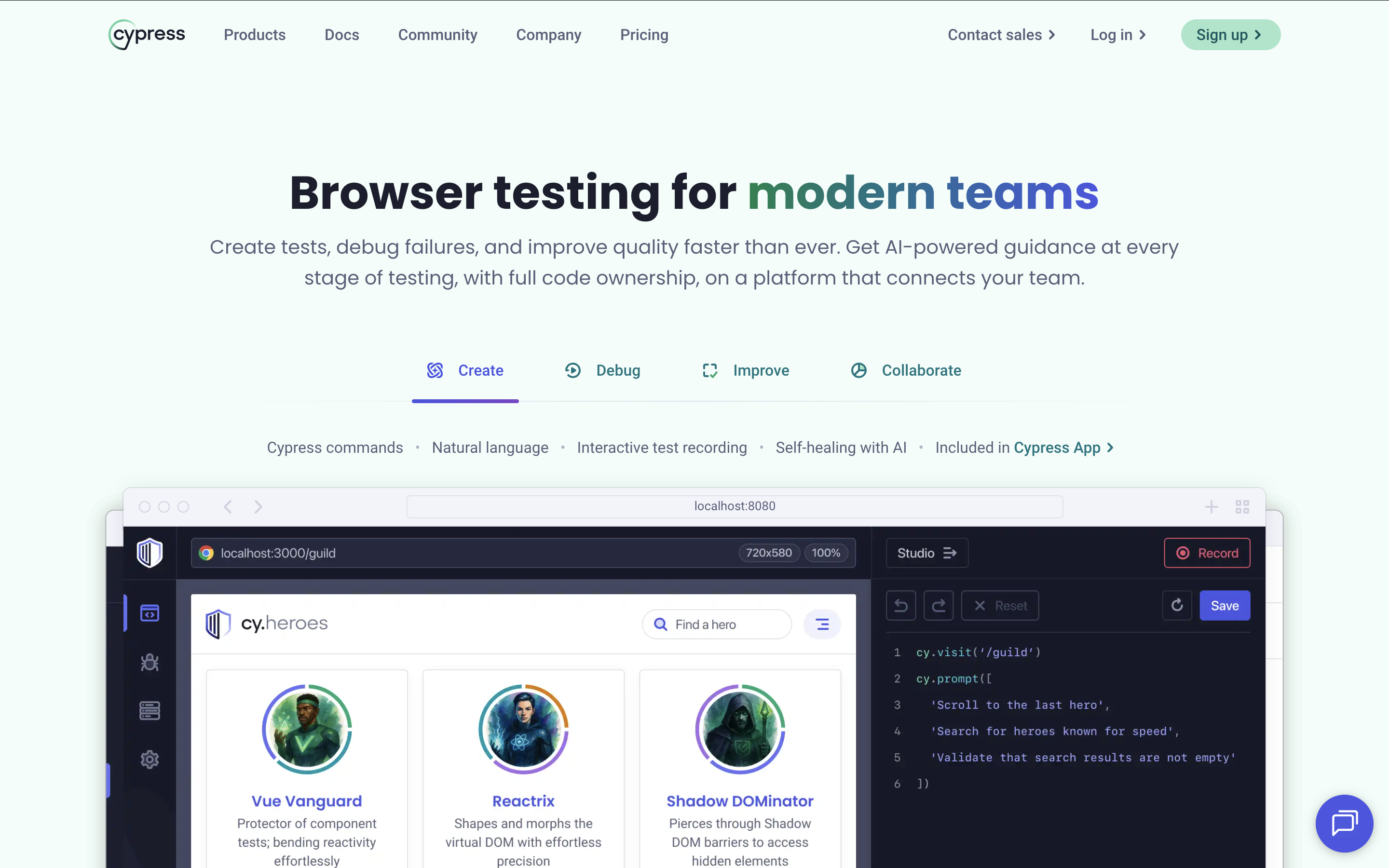
Feature highlights:
- Automatic waits: no async/await functions needed
- Cross-browser: Firefox, Edge, Electron
- Dashboard service: parallel & cross-platform execution, load balancing, insights
- CI/CD integration: CircleCI, GitHub Actions, GitLab CI, Bitbucket Pipelines, AWS CodeBuild
- Snapshots and videos: review DOM states to debug faster
Visit Cypress Website | G2 Reviews
Pricing: Free tier available. Paid plans start at $67/month; Enterprise tier offered.
📖 Read More: Katalon vs Cypress: A Detailed Comparison
4. Playwright (web, API, and end-to-end testing)

Built by the original Puppeteer developers, Playwright expands cross-browser support for automated web testing. It provides APIs to interact with Chromium, Firefox, and WebKit using JavaScript.

Feature highlights:
- Reusable authentication states: reduce repetitive login steps
- Codegen: generate tests via recorded user actions
- Trace Viewer: step recordings, DOM snapshots, logs, network data
- Test reports: HTML reports and logs for headless browsers
- Selenium Grid integration: parallel execution
- Cross-browser: Chrome, Edge, Firefox, Opera, Safari
- Language support: TypeScript, JavaScript, Python, Java, .NET
Visit Playwright Website | G2 Reviews
Pricing: Open-source
5. Appium (mobile, UI, automated testing library)

Appium is a Node.js library used to build testing frameworks for native, web, and hybrid mobile apps. It uses Selenium WebDriver and JSON protocols to drive iOS and Android applications.
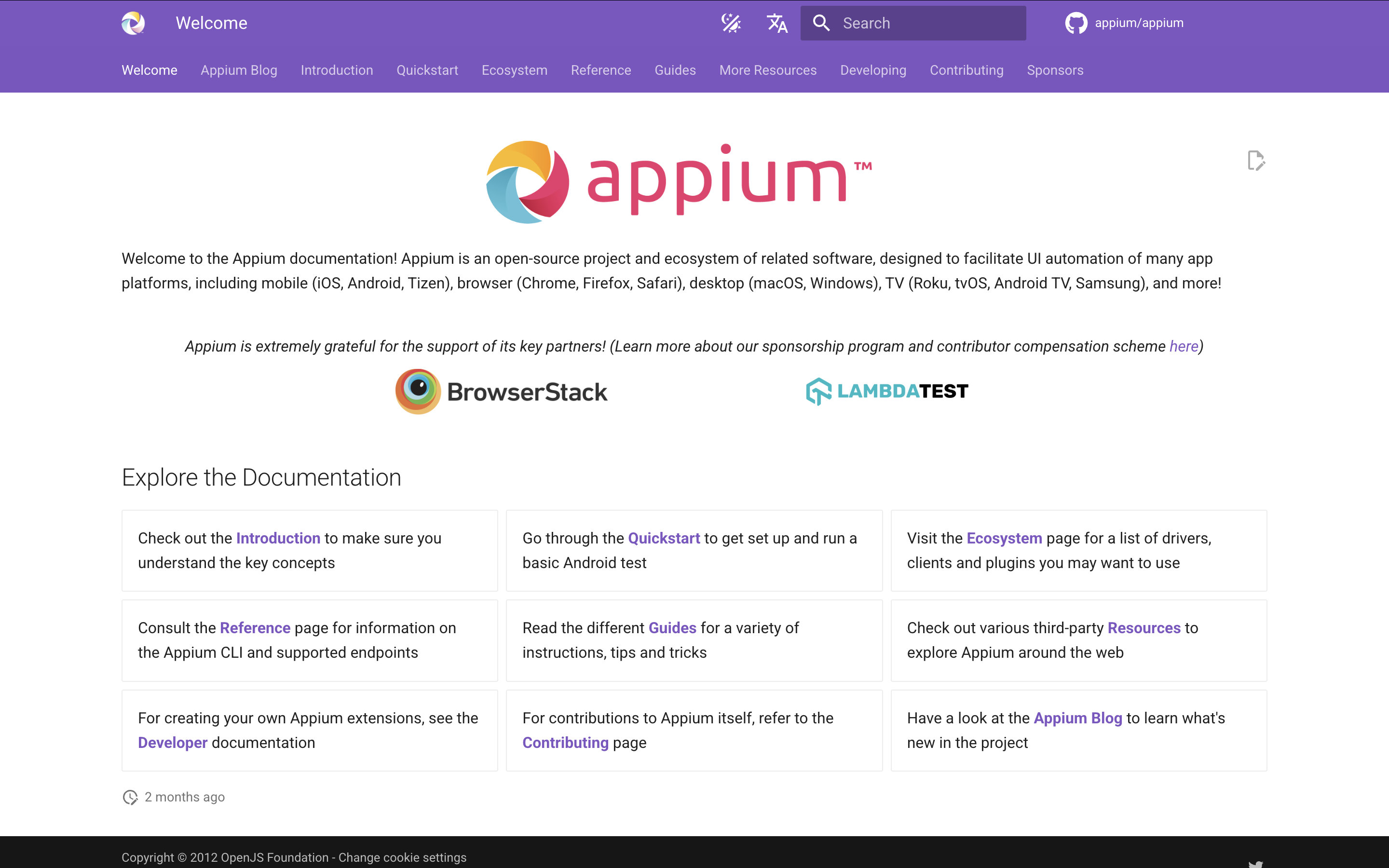
Many language bindings already exist, so getting started is easy without writing everything from scratch. Appium includes strong gesture and touch automation capabilities for complex mobile interactions.
Feature highlights:
- Record-and-playback: capture interactions into runnable scripts
- Cross-platform execution: test native, hybrid, and web apps on Windows, iOS, and Android using one API
- Cloud environments: supports Sauce Labs, BrowserStack, Testdroid, etc.
Visit Appium Website | G2 Reviews
Pricing: Open-source
6. Tricentis Tosca (enterprise functional testing tool)

Tricentis Tosca is a comprehensive automation tool designed for large-scale UI and functional testing across web, API, mobile, and desktop applications. It uses a model-based testing approach to map UI or API behavior into reusable test models that reflect real business workflows.
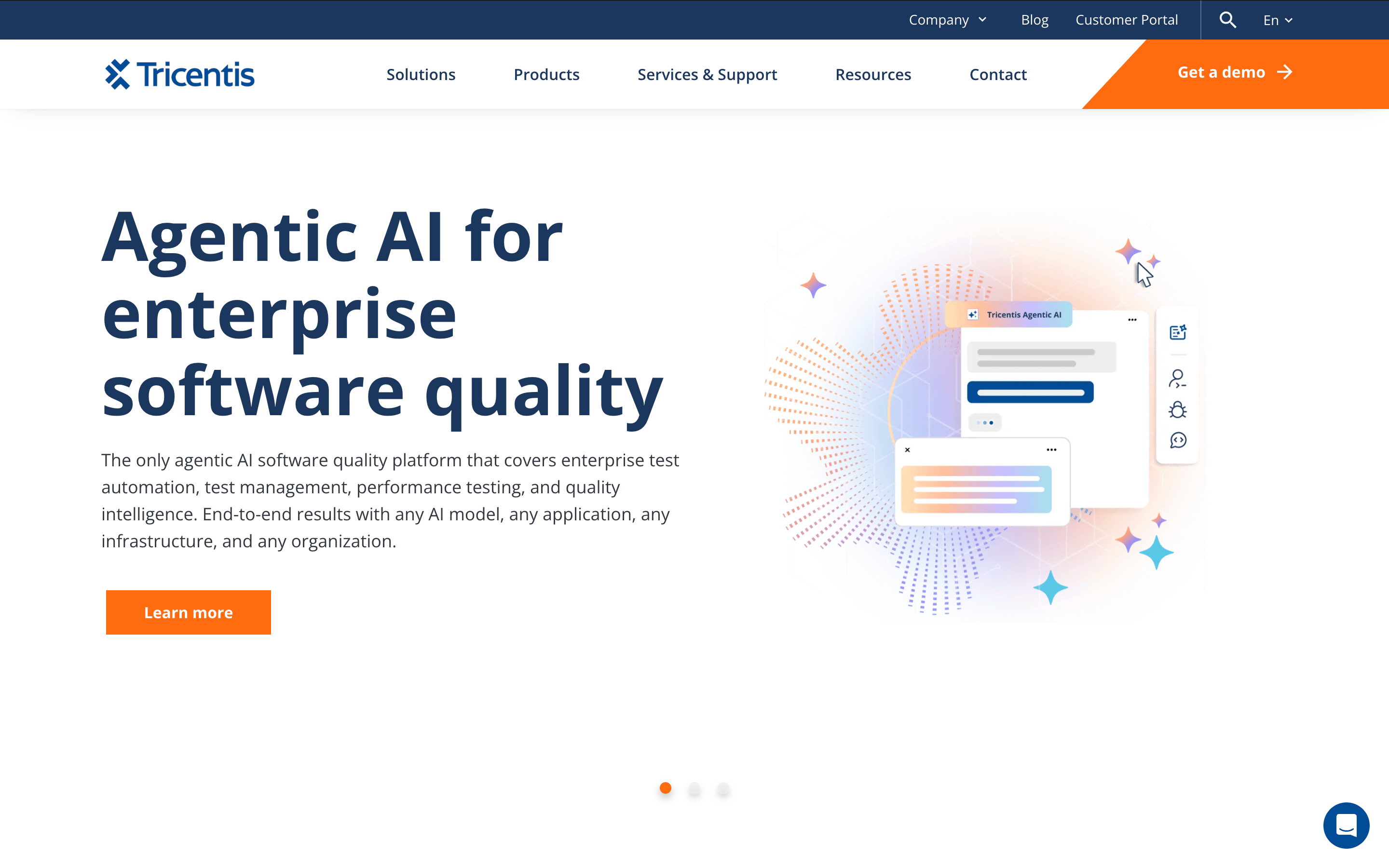
Highlight features:
- Codeless, model-based test creation for high reusability and low maintenance
- Intelligent test design and prioritization using risk and requirement analysis
- Service virtualization for simulating unavailable or dependent services
- Robust API scanning and testing capabilities
- Parallel and cross-platform test execution support
- Integrations with CI/CD tools and testing frameworks
Visit Tricentis Tosca Website | G2 Reviews
Pricing: Contact sales
7. TestComplete For Functional Testing

TestComplete is a robust automated functional testing tool designed for conducting functional UI testing across desktop, mobile, and web applications. It supports over 500 native controls and works with third-party frameworks, allowing it to effectively interact with dynamic UI elements across many technologies.
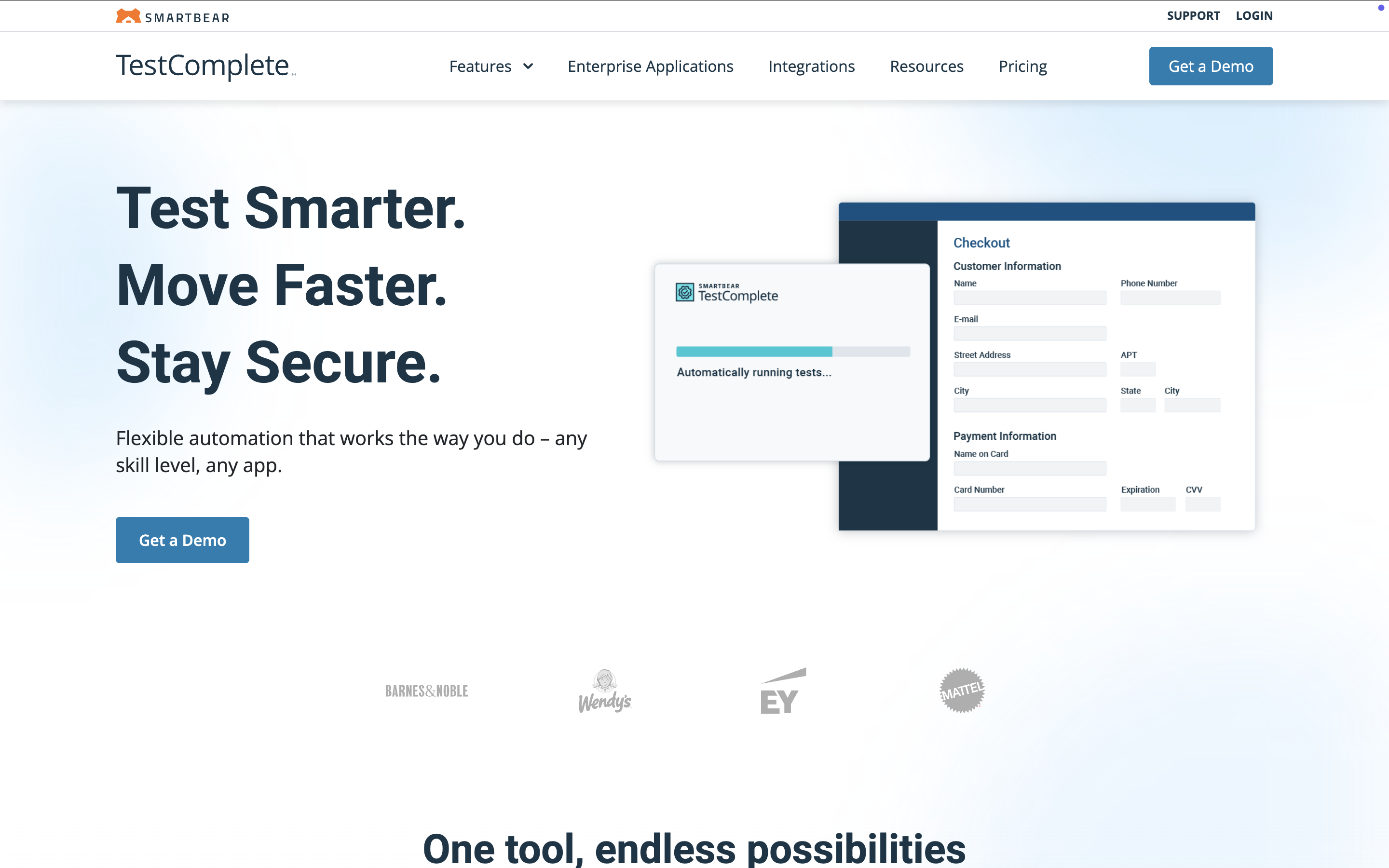
Highlight Features:
- Test Log displays full records of all test actions.
- Log includes success/failure messages for each step.
- Results can be filtered and reviewed for analysis.
- Recording tests requires no knowledge of internal app objects.
- Recorded actions can be modified and extended.
- Automatically recognizes control types and adds relevant properties/methods.
- Tests can run individually or as part of larger suites.
- Tests can be started from Project Explorer or by running the entire suite.
Visit TestComplete Website | G2 Reviews
Pricing: 14-day free trial. Paid plans: Fixed and Floating licenses.
8. Karate DSL (API, UI and performance testing)

Karate DSL is designed for both non-technical users and developers to test APIs using BDD scenarios. Built on Gherkin, it removes the need to write extra Java step definitions, keeping test code shorter and easier to maintain.
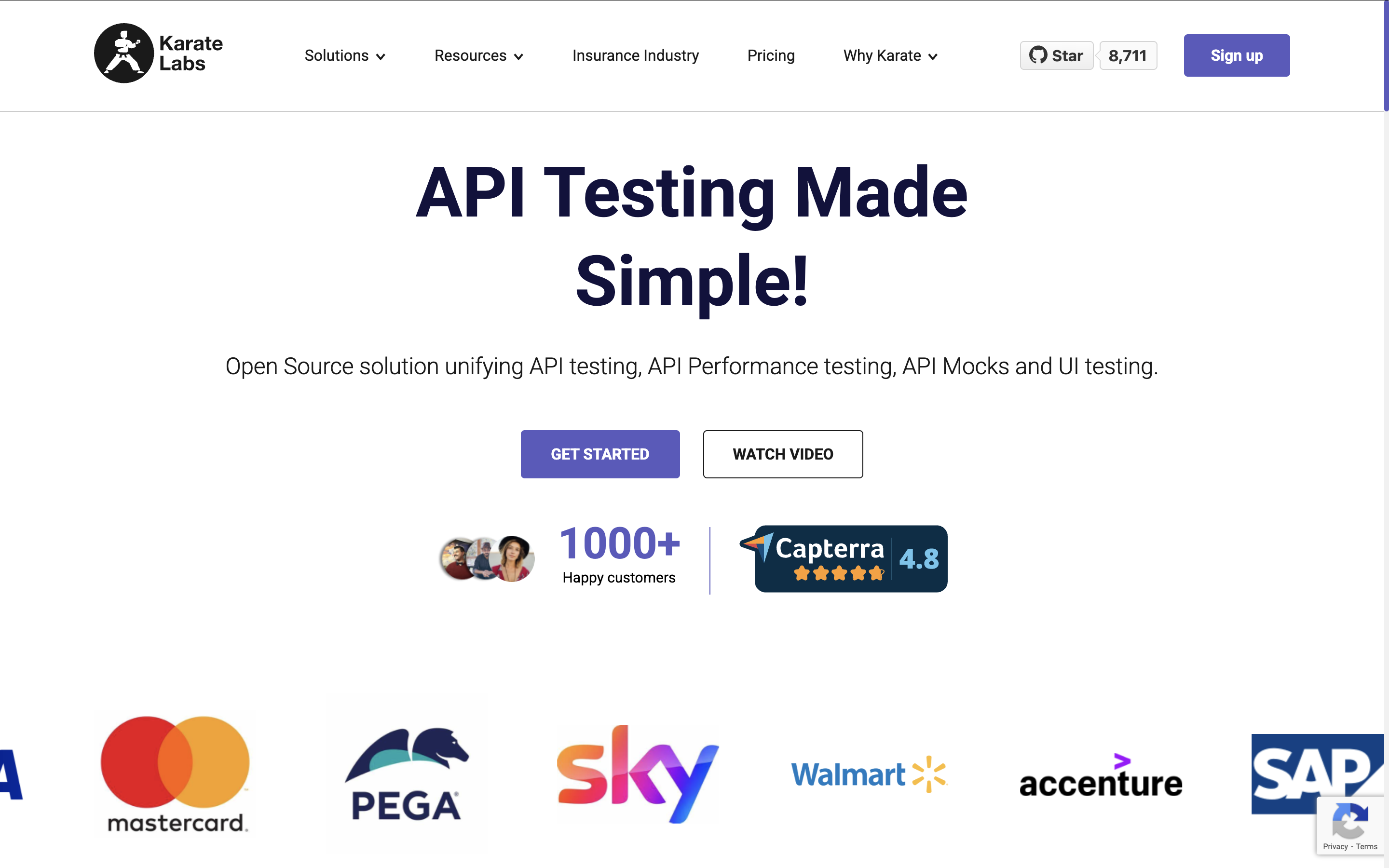
Feature highlights:
- BDD syntax: Pre-written test definitions in TestRunner; JSON scripting in feature files.
- Validate API responses: Built-in HTTP, JSON, GraphQL, XML assertions with “match”.
- Data-driven testing: Run tests using JSON and CSV files.
- Debugger: Fix failing test scripts while they rerun.
- Reporting: HTML reports and consolidated logs for parallel executions.
Visit Karate Labs Website | G2 Reviews
Pricing: Open-source
9. Rest-Assured (web API testing)

Rest Assured is a Java library for testing REST APIs and RESTful (XML/JSON) web services. Like Karate DSL, it supports Given-When-Then syntax while allowing further customization using Java.
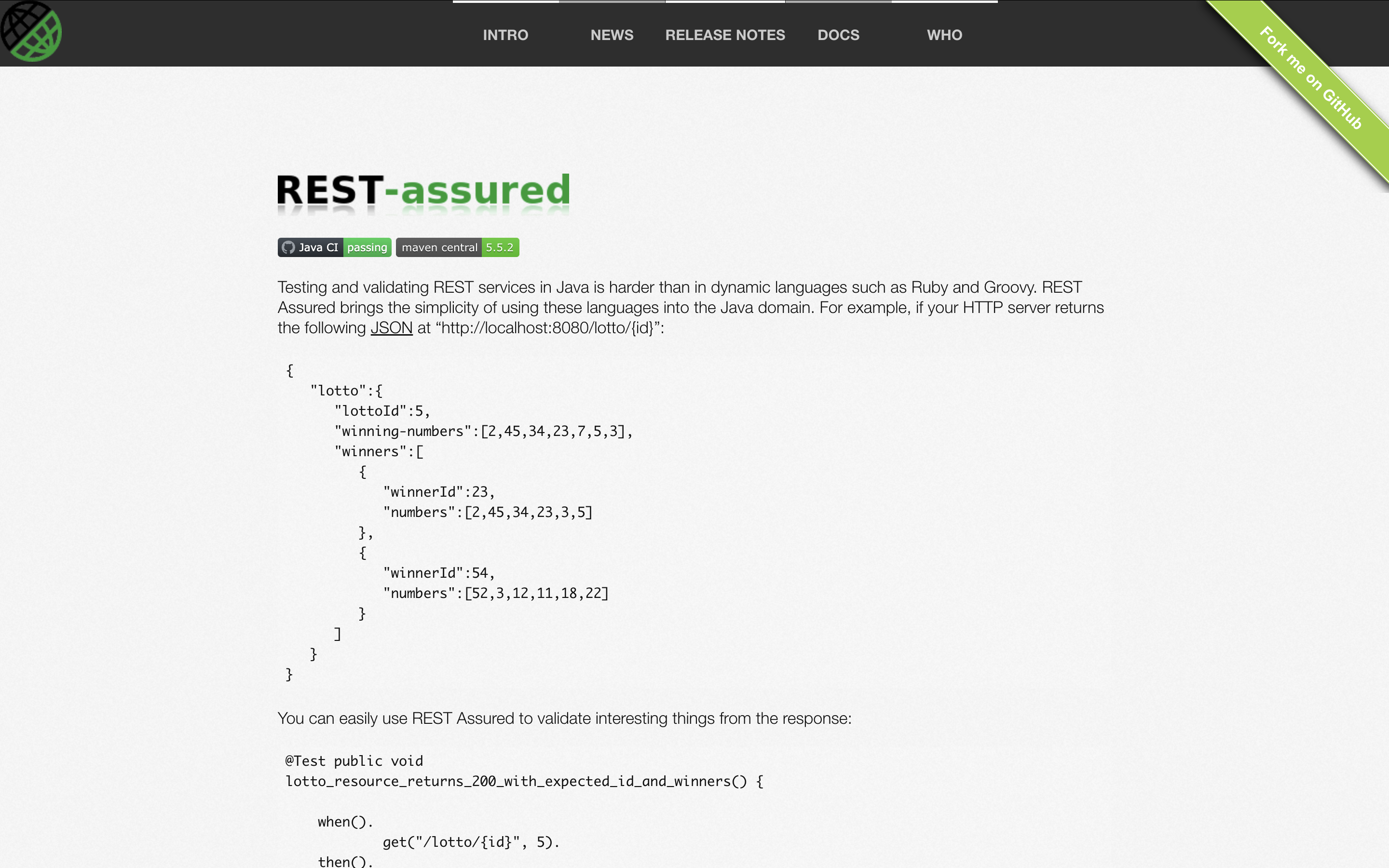
Feature highlights:
- API service assertions: Works with XML and JSON.
- Validations: Status codes, headers, body, and full response verification.
- Data-driven testing: Use JSON or XML data files.
- Build tool integrations: Works with Ant, Maven, and others.
- Easy maintenance: Independent Java classes allow uploading all tests at once.
- Unit testing: supports JUnit and TestNG runners.
Website: Rest Assured
Pricing: Open-source
10. XCUITests (iOS mobile UI testing)

XCUITest was built for iOS developers. As a sub-framework of XCTest, it allows users to validate mobile UI behaviors using test classes, methods, and test targets.

Feature highlights:
- Quick setup with XCode IDE
- Parallel testing across macOS environments
- Test reporting with screenshots and action recordings
Pricing: Open-source
Best practice for using functional testing tools
With all of the functional testing tools listed above, you can now start improving your testing activities and streamlining the entire process:
- Create test cases faster and more accurately using built-in script creation features — no coding expertise needed.
- Run test scripts across environments, browsers, devices, and operating systems of your choice.
- Compare actual outcomes with expected results; inconsistencies will be flagged as defects.
- Generate reports with detailed analytics to support data-driven decisions.
- Integrate your tools with CI/CD pipelines to trigger tests automatically upon code commits.
- Leverage AI-powered capabilities to make testing more autonomous and reduce manual effort.
Should functional testing be automated?
Examining if an application works as expected takes tremendous time if done manually. While manual testing still plays a role (e.g., user acceptance testing), reusable automation scripts drastically shorten testing cycles.
Tests that are best suited for automation include:
- Repetition: running smoke, sanity, and regression tests for each new release.
- Cross-platform compatibility: testing on multiple browser/device/OS combinations.
- Data-driven workflows: e.g., form submissions with inputs pulled from databases or files.
Who does functional testing?
Software quality is a shared responsibility. From functionality and security to performance and usability, both developers and quality engineers contribute to ensuring testability.
Developers write unit tests early to prevent dependency complications.
Quality engineers extend coverage using methodologies like behavior-driven development (BDD) and data-driven testing (DDT).
|
FAQs About Functional Testing Tools
What are functional testing tools and what do they aim to achieve?
Functional testing tools automate the process of verifying if a system's features work as expected, ensuring specific functions meet defined requirements. They validate core functionalities, unlike performance or load tests that focus on speed or stability.
What are the main categories of tools available for automated functional testing?
There are generally three main options: open-source functional testing tools, libraries, or frameworks (e.g., Selenium); single-point commercial automation testing tools (specialized for one purpose); and comprehensive software quality management platforms (unifying various testing functionalities).
Can functional testing be automated, and which types of tests are most suitable for automation?
Yes, functional testing can and often should be automated to save time. Tests best suited for automation include repetitive tests (like smoke, sanity, and regression tests), cross-platform compatibility tests across multiple browsers, devices, and operating systems, and data-driven tests for fixed workflows.
What key criteria should be considered when selecting an automated functional testing tool?
When selecting a tool, consider its test automation capabilities, supported scripting languages, cross-environment testing capabilities, application compatibility (web, mobile, desktop), availability of record-and-playback features, ease of integration with CI/CD pipelines, reporting and analysis features, supported test types, community support, and customization options.
Who typically performs functional testing within a software development team?
The responsibility for software quality, including functional testing, is shared. Developers often write unit tests for their code, while quality engineers expand upon these with methodologies like behavior-driven development (BDD) and data-driven testing (DDT) to ensure broader test coverage.
